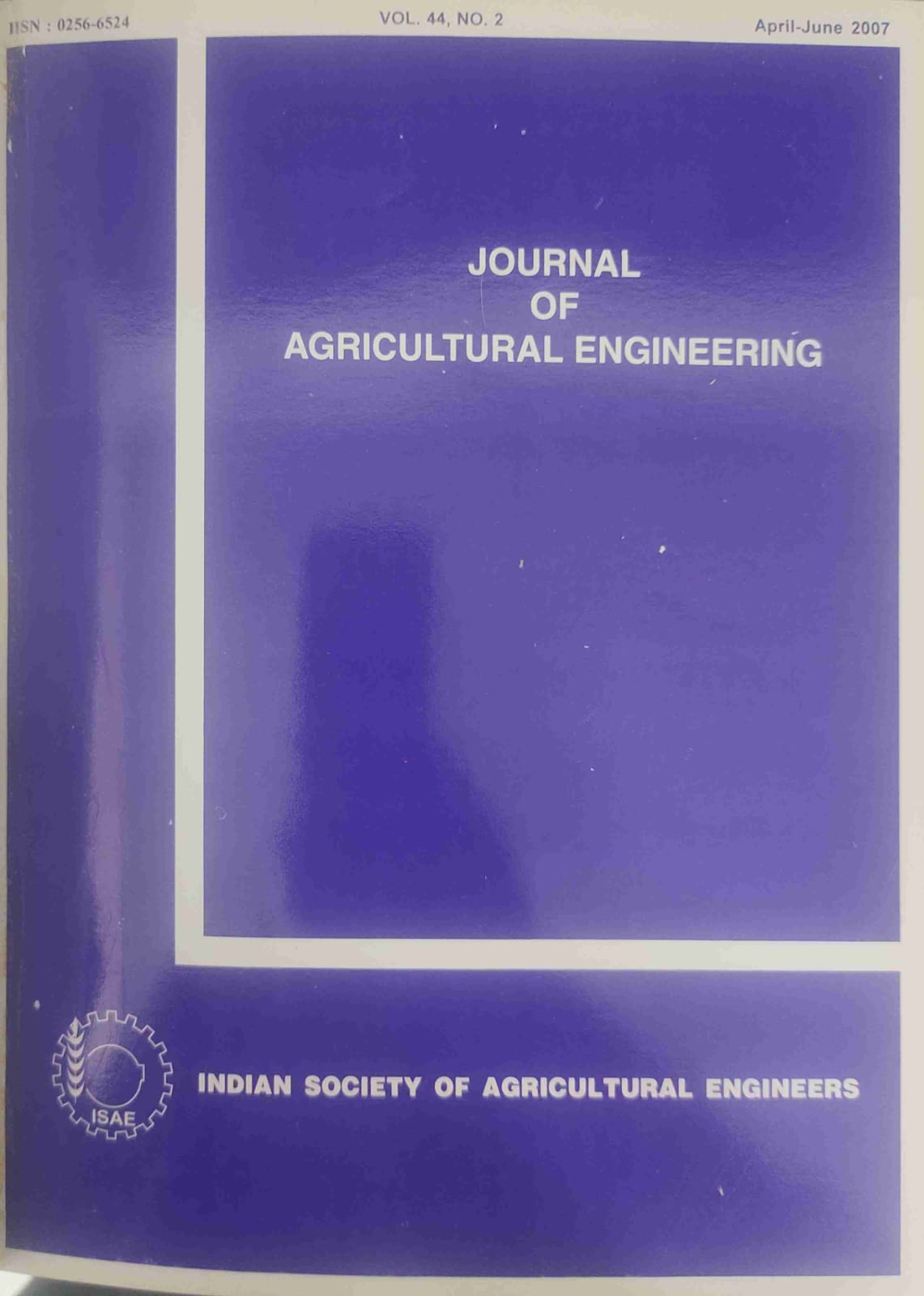Optimization of Alcohol Amount for Transesterification of Ratanjot (Jatropha curcus L.)
DOI:
https://doi.org/10.52151/jae2007442.1269Abstract
Transesterification process is now a easy and reliable method to prepare the biodiesel from different edible or non edible oil sources, but before going to transesterification, it is needed to select either single or double stage process to determine the amount of lye (catalyst) and alcohol required to transesterify the oil. In this study single stage method (base catalyst method) was followed to transesterify the Ratanjot because of its fatty acid content «1%). From the study the amount of Lye (NaOH) was found to be 8g per litre of oil. The optimum amount of alcohol for Ratanjot was found to be 350 ml per litre of oil by single stage process. The density, viscosity, acid number flash point and fire point of the biodiesel Obtained was 0.872 g/ml. 2.95Cst, 0.26 mg KOH/g. 175°C and 190°C respectively.
References
Noureddini H; Gao X; Phikana R S. 2005. Immobilized Pseudomonas cepacia lipase for biodiesel production from soybean oil, Bioresource Technology, 96, 769-777.
Ghadge S V; Raheman H. 2004. Biodiesel production from mahua (Madhuca indica) oil, Proc. International Conference on Emerging Technologies in Agricultural and Food Engineering, December 14-17, IIT, Kharagpur














